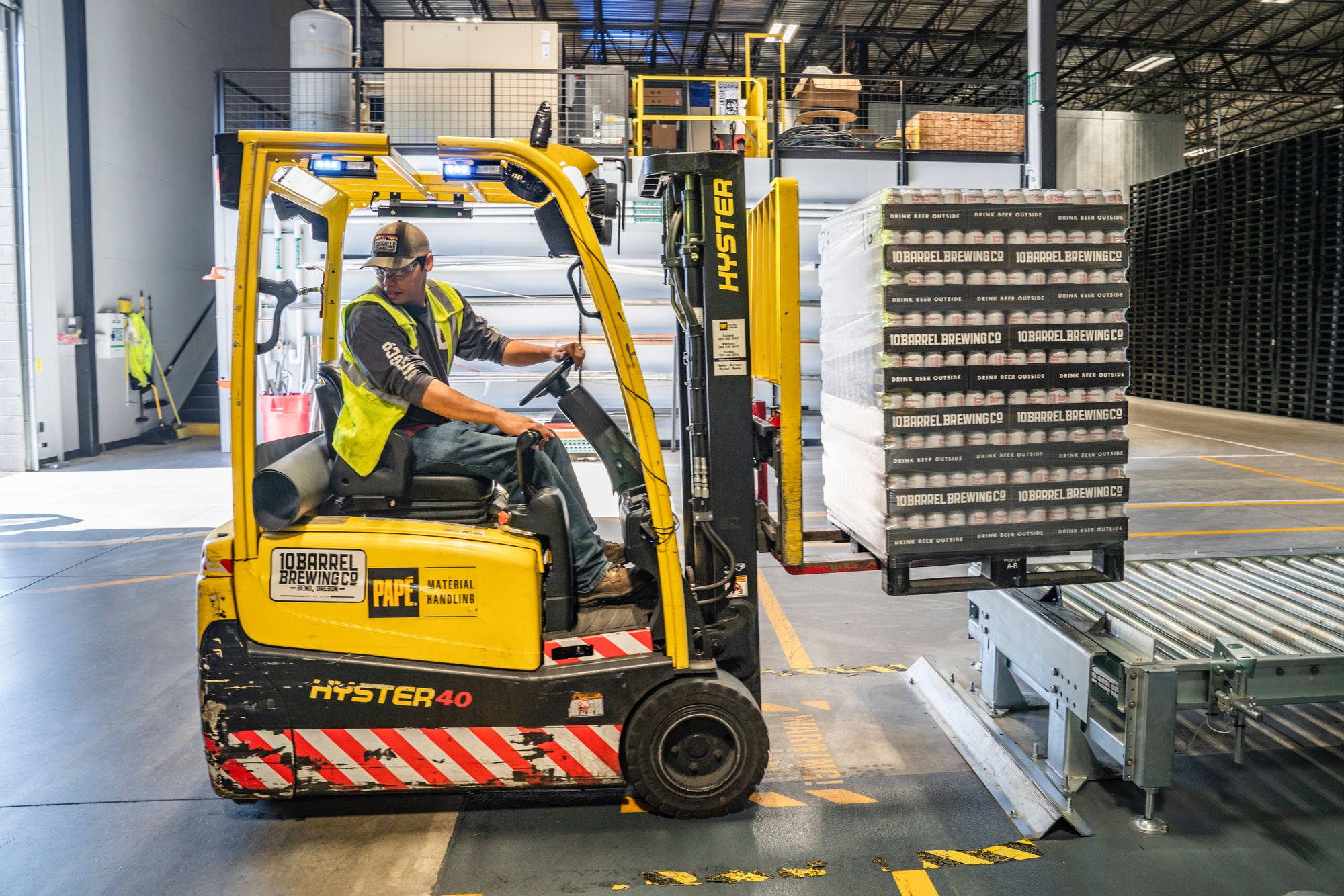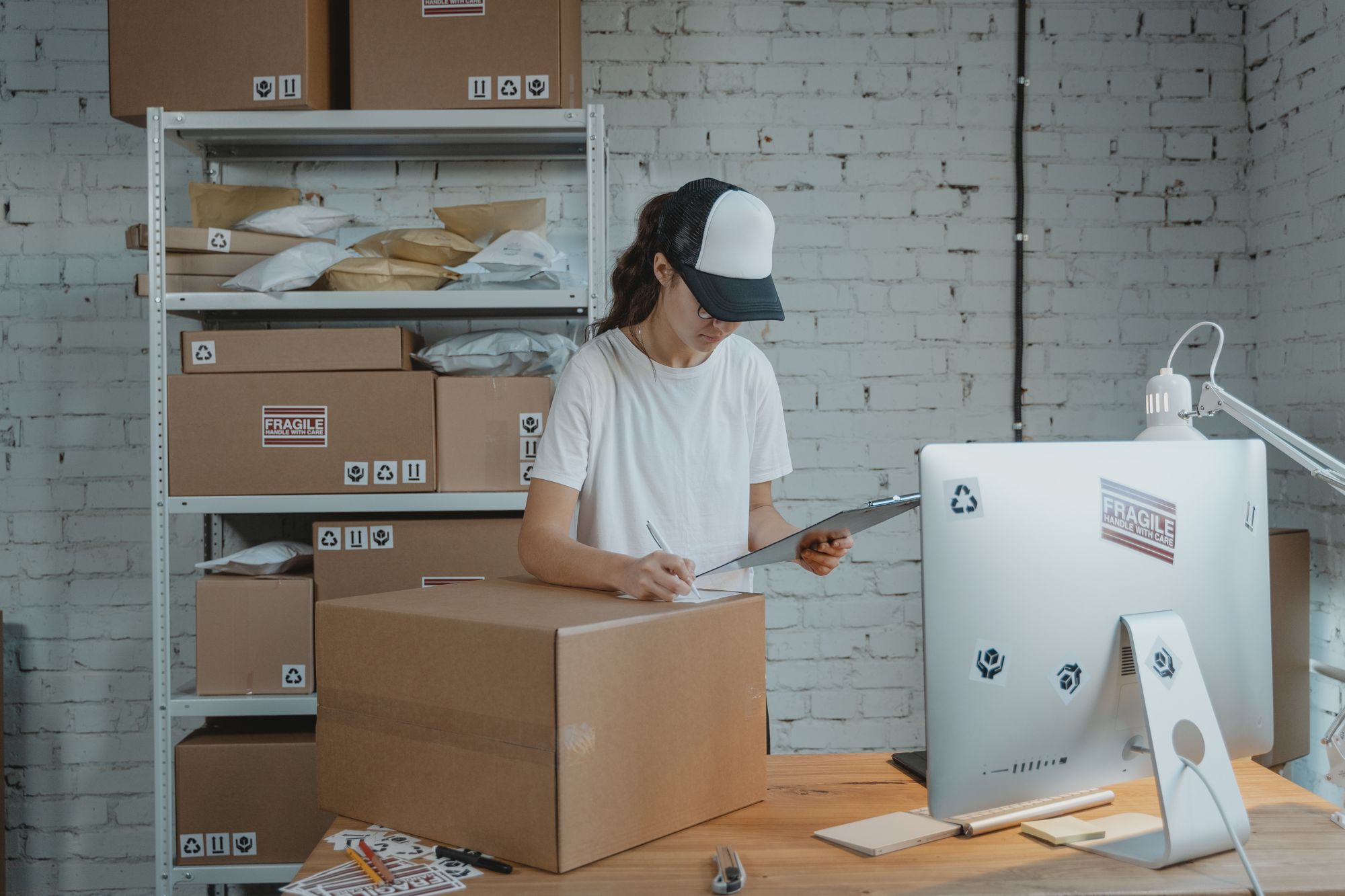Warehouse vs. Dropshipping - which one is better. Well, we can debate over this for hours. However, none of us can deny that both of them have proved to be a boon for the e-commerce industry.
In 2020, retail e-commerce sales worldwide amounted to 4.28 trillion US dollars, and e-retail revenues are projected to grow to 5.4 trillion US dollars in 2022 (Source: Statista). This trend is here to stay.

However, moving your business online is one thing, and managing the delivery of the products is a different ball game altogether. Business owners understand that dealing with customers and selling them face-to-face (at their store) is very different from selling their products online and getting them delivered timely.
You require a robust system for a seamless order fulfillment process, whether you have a warehouse and own your stock or use the dropshipping method.
What is Order Fulfillment?
Order fulfillment is all about assembling, packaging, and shipping products to customers. It involves the following process:
- Picking items from the inventory
- Packaging it with the label of the company that is selling the product online
- Getting it shipped to the customer
In this article on Warehouse vs. Dropshipping, we will be discussing the following topics
- What is Dropshipping?
- What is a Dropshipping Model?
- Pros and Cons of Dropshipping
- What is Warehouse Inventory?
- What is the Warehouse Inventory model?
- Pros and Cons of having Warehouse Inventory
- How to Transition from Dropshipping to owning your own stock
- Examples of e-commerce business who use dropshipping
Before getting to the dropshipping model, let's discuss why dropshipping has become so important.
There are millions of businesses selling online through their website or apps. And then there are some other millions registered on Amazon and the likes.
Now each of these companies can't have their warehouse inventory or delivery system. It is because most of them are SMBs or startup companies.
They are unwilling to spend too much capital on buying the entire product inventory, paying for a warehouse or additional staffing, and get into other hassles of product delivery.
For instance, Stella recently started an online business of providing baby items - baby clothes, baby accessories, toys, etc. As a startup owner, Stella has to focus on sales.
She doesn't want to purchase the entire inventory with the limited capital that she has until she is sure of the most selling products. At the same time, paying for a warehouse and hiring additional resources are added costs. So what should she do?
The answer to her problems is Dropshipping.
What is Dropshipping?
Dropshipping is an order fulfillment method in which businesses don't purchase and keep their stock physically with themselves. Therefore the company doesn't have to purchase all the product inventory.
Instead, it has a thoughtful approach in which the company transfers the customer's order to a wholesaler, manufacturer, or retailer, whoever agrees to play the role of a dropshipper. These suppliers are responsible for picking, packing, labeling, and shipping the products to the customer.
What is a Dropshipping Model?
Let us look at an example here to understand dropshipping model better:
- 'A' owns an online store of fruit and vegetables.
- Customer 'B' visits' A's' online store to place an order for some organic farm fresh mangoes.
- Once the order is placed, both 'A' and 'B' receive the confirmation.
- Now 'A' alerts his dropshipper either manually or automatically.
- Let's assume here the dropshipper is the wholesaler 'C' who will deliver the mangoes to 'B.'
- 'C' plays a dropshipper and bears all the responsibilities - right from packaging to shipping the goods to 'B.'
- 'C' charges 'A' for the services and 'A' charges' B.
- However, 'B' has no clue that the mangoes are from 'C' as all the packaging and labeling is from A's store.

Thus, dropshipping works as follows:
The customer goes to the online store and makes a purchase. The online store reaches out to its supplier to pick, pack and ship the product to the customer. Products that one sells to the customer come from a supplier who ships directly to him.
Therefore, online businesses neither see nor handle products when using the dropshipping method.
In simple words, dropshipping means that the business owner never has the products they sell in their online store; instead, they are stored and shipped by a third party.
When a customer places an order on the online store, both of them receive a confirmation. This order is forwarded either manually or automatically to the supplier. Then, the supplier ships the products directly to the end customer after packaging the product and labeling them on behalf of the online store.
In other words, the online store is dependent on a third party for the quality of the product, its packaging, and timely delivery. It has limited control over the inventory and order fulfillment.
Any of the below-mentioned players can act as a supplier:
- Manufacturers - They manufacture the products. They do not deal with the consumers directly. Instead, they sell in bulk to the wholesalers and, in some cases, to the retailers.
- Wholesalers - They buy products in bulk from the manufacturers and then sell them to retailers.
- Retailers - sell products directly to the consumers.
While we have discussed the process of dropshipping, we are yet to talk about another critical aspect of dropshipping.
How can Customers Return Goods via Dropshipping?
If a customer receives the wrong product or is dissatisfied with the product, he will contact the online store. The online store coordinates with the supplier and returns the product or gets the correct item sent out.
So, all in all, the supplier doesn't exist for the customer. His job is to stock, pack and ship the product to the customer. Rest all the responsibilities lie with the online store, whether marketing, offering discounts, or customer service.
Dropshipping is popular among new entrepreneurs. Since you don't need to stock your selling items, it's possible to start a business with limited funds.
An e-commerce website that operates on a dropshipping model will purchase the items it sells from a third-party supplier or manufacturer. It is this supplier who will carry out the order fulfillment process end-to-end.
This model not only cuts operational costs but also frees up your time to focus on customer acquisition.
What are the Pros and Cons of Dropshipping?
Now that we understand what dropshipping is and how it works, let us look at the pros and cons of dropshipping.
Pros of Dropshipping
- Low Capital: Dropshipping lowers the cost of starting and maintaining a business online. With no immediate requirement of investment in inventory, businesses require minimal capital.
- Low Overhead Expenses: As there is no added cost of purchasing and managing inventory, overhead expenses are pretty low. Your hard-earned money does not sink with those products that don't sell or expire.
- Minimum Risk: Starting a business always involves a lot of risks. There are 50-50 chances of success and failure. Therefore, it is always wise to play safe. Dropshipping reduces the cost of running an online business significantly. As mentioned previously, you don't have to own stock that can cost you heavily and don't have to pay for a warehouse. At the same time, you don't need to hire resources for delivering the products or go through that hassle.
- Easy to Manage: With dropshipping, you have no business with physical products, and as such, there is no need for you to rent and manage a warehouse, pack and ship orders or deal with staffing issues. It's the job of the supplier.
- Flexible location: Dropshipping allows you to operate your business from anywhere since you don't have to bother about any physical inventory. You only need a good internet connection.
- More comprehensive product range: With zero investment in building your inventory, it is easy to add more products to your portfolio and increase your customer offerings. All you need is to keep a tab on the top trends and add them to your site. You can also easily change your offerings without having to purchase them.
- Easier to scale: Let's assume you are an online party accessories provider. On the occasion of Halloween, you receive 5x times the order that you usually received earlier. With the dropshipping method, you don't have to worry or sweat much. It's the suppliers who do most of the work on additional orders. Therefore, you can entirely focus on sales growth and customer service.
- No hassle of inventory management: Inventory management is a cumbersome process and quite time-consuming. Without a physical inventory, you and your employees don't have to bother about managing stock and spend more time on other productive tasks.
- Suitable for product testing: The dropshipping model allows you to understand what customers want. There is a lot of room for testing the different products and understanding the consumer's thought process.

Cons of Dropshipping
- Lack of Quality Control: The biggest disadvantage of the dropshipping model is that the seller is nowhere in the scene of the entire fulfillment process. He has to put his trust in the third party and be accountable for their actions. With no control over the inventory, quality of the product, its seamless delivery, or the customer experience, a seller is in a complete fix.
- Lower Profit Margins: Though the dropshipping model requires minimal investment, several other challenges result in lower profit margins. For instance, when you buy from a wholesaler or a manufacturer, you may get a discount of 40% or more. Whereas in dropshipping, you will get a less than 20% discount when purchasing from a supplier. In most cases, your supplier may also be playing a similar role to other online companies. Therefore, with no exclusive offering, the only way to stay in the competition is to cut into your profits by keeping your selling price low.
- Inventory Issues: Since you don't have the stock with yourself, you are unaware of the availability of the items. Sourcing from multiple warehouses, which are also fulfilling orders for other businesses, is challenging to keep a tab on the inventory.
- No control over the Delivery: There are chances of errors on the part of the suppliers. Since you are accountable for the product and delivery, you have no option but to take responsibility for others' mistakes. Whether it is a low-quality product, missing items, or delayed deliveries, it is your responsibility. These errors can cost you your customers, as they are not aware that the third party has made the glitch.
- Shipping Costs: Let's say you have an online store of furnishing items. Your website displays multiple products which you have sourced from different suppliers. Now a customer orders three different items-bedsheets (to be dropshipped by supplier A), Carpet (to be dropshipped by supplier B), and Vases (to be dropshipped by supplier C). All three items are to be delivered to the same person, yet they will be delivered separately, and each supplier will charge you for shipping. This non-coordination turns out to be an additional cost in your pocket.
- Reduced Brand Power: It's a third party that produces your products which may be common among other online businesses. So it's challenging to establish yourself as a unique brand. It can be risky for your brand.

Now that we have discussed the pros and cons of Dropshipping, it's time we spoke about shipping from the warehouse. And then you can choose which method you want to go for as per your requirements.
What is Warehouse Inventory?
Order fulfillment through warehouse inventory is another great alternative for online businesses. It is the traditional way of fulfilling your orders.
Contrary to dropshipping, in this method, online store owners purchase goods and stock them up in a warehouse even before they begin selling their products.
E-commerce businesses buy the products in bulk from the manufacturer/wholesaler or a distributor and keep them in stock in a warehouse until they receive the order.
Warehouse inventory shipping is a tried-and-tested retail method.
If you didn't know, a warehouse is a place/space where you store and manage your inventory, i.e., your purchased goods are physically available there. You can either purchase, build or rent warehouse space.
Thus, shipping through the warehouse inventory model is very straightforward.
However, apart from investing in stock and managing them, business owners have to bear the cost of the warehouse. Additionally, it requires hard work to manage the warehouse's day-to-day operation and fulfill its orders.
Now order fulfillment through warehouse inventory can ideally be done in two ways:
- Self-fulfillment method
- 3rd-party (3PL) fulfillment method
Self-fulfillment Method
Here, the online retailer completes the entire fulfillment process independently without the help of a dropshipper or a third-party logistics provider. In this case, the retailer stores inventory either in-house or in some warehouse space.
This method is standard among businesses with small orders as they take care of picking, packing, and shipping the orders all by themselves.
However, many large organizations also adopt the self-fulfillment method since they can easily afford a more extensive warehouse and hire an in-house team of experts to pick, pack, and ship the products.
3PL fulfillment Method
Here, an e-commerce company hands over its order fulfillment process to a third party. However, this is different from dropshipping because the company purchases the goods from the manufacturer or wholesaler to maintain its physical stock.
This stock is stored in a fulfillment center or a warehouse. The need for a 3PL arises when the retailer starts receiving too many orders.
Companies run out of space to store their inventory in such situations, and packaging and shipping take too much time.
An outsourced 3PL fulfillment company takes care of the entire fulfillment process — from receiving your inventory from your manufacturer, picking, packing, labeling, and shipping to restocking returned products.
Companies providing 3PL services have experts to take care of the entire process. Therefore the quality of the service is never compromised.
What is a Warehouse Inventory Model?
The warehouse inventory model, as mentioned above, is of two types. Let's take up each scenario to understand it better.
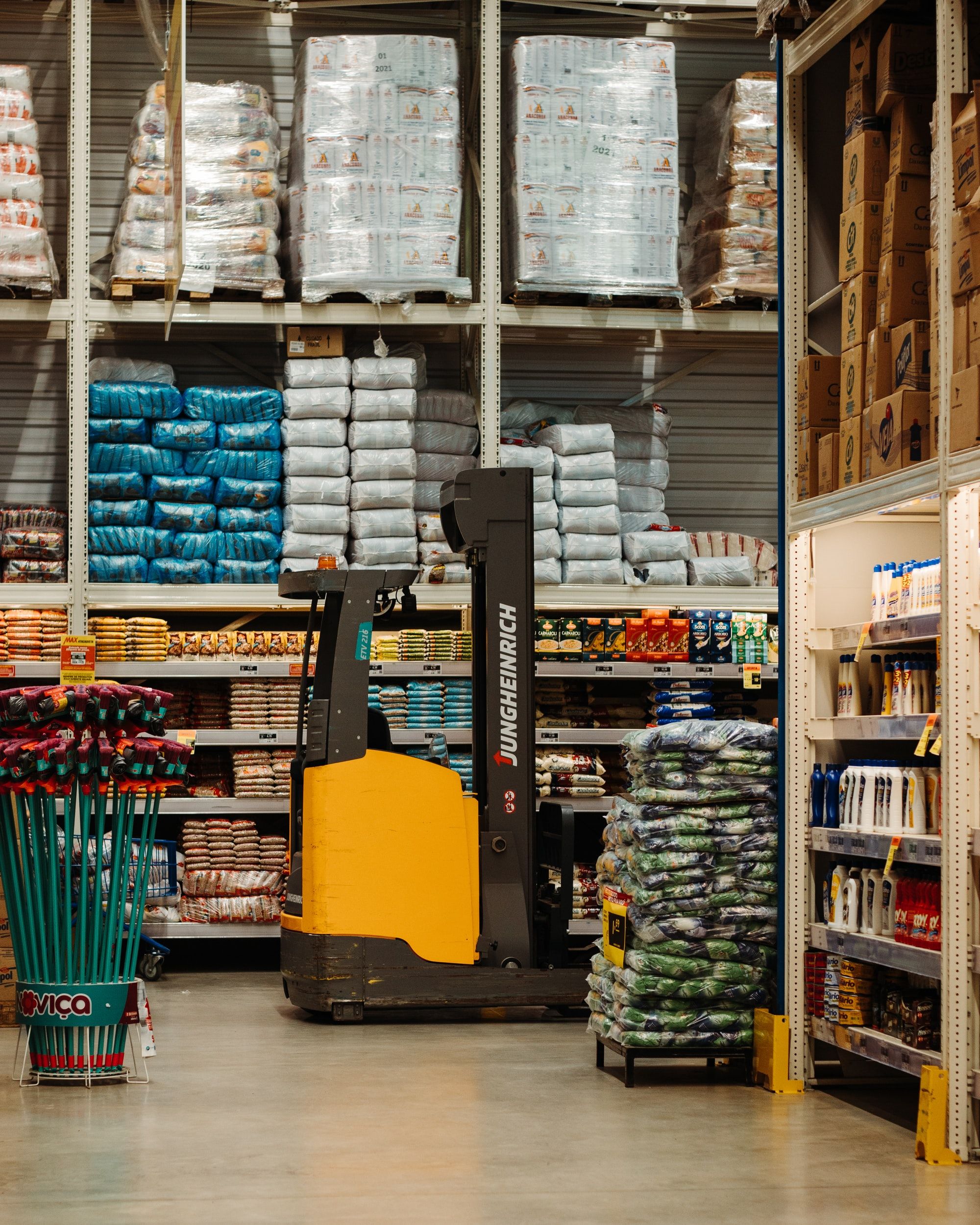
1st scenario:
- Bob and Robby start an online business of leather goods - belts, bags, and jackets.
- They have purchased these goods in small quantities from multiple suppliers.
- Now they have also rented a small space in a warehouse to keep their stock.
- 'A,' 'B,' and 'C' visit their e-commerce site on the same day and place an order for a bag, belt, and jacket, respectively.
- Once the orders are placed, Bob and Robby receive confirmation.
- They pick up the products from the warehouse, pack them, label them, and ship them to 'A,' 'B,' and 'C.'
2nd scenario:
- Bob and Robby's business has grown into a large-scale operation.
- Their's has become a famous company across the US or maybe globally.
- Now they have a huge warehouse filled with stock.
- They are receiving thousands of orders daily.
- They have hired a large team of experts in-house to manage their entire fulfillment process and inventory.
Both the scenarios work on the self-fulfillment model.
3rd scenario:
- Bob and Robby had rented a small warehouse space since they had minimal inventory.
- At that time, they were receiving, on average, three orders a day.
- What if they start receiving 100 orders a day?
Is it possible to manage the order fulfillment process on your own or store your inventory in that small warehouse? The answer is NO.
Now we are looking at the 3PL order fulfillment process.
However, no method is full proof and has its pros and cons. Let's discuss them here.
Pros & Cons of Self-Fulfillment Method
Let us now look at some Pros here first:
- Better Customer Service: By adopting a self-fulfillment method, you are removing any middlemen from the system. Since everything is done by you or under your supervision, you are likely to provide better service to your customers. You have complete control over your operations, ensuring every order is packed the way you want.
- Quality Control: Since everything is under your control, you can keep tight quality control measures.
- Provide a Branded Experience: In the self-fulfillment method, you have the liberty to offer a wholesome brand experience with branded packaging, on-time delivery, and enhanced product quality. Additionally, you can put special discounts or offers into your package to build a better relationship with your customers. It helps you promote your brand's identity that plays a critical role in maintaining customer loyalty.
- Fewer Direct Costs: You don't have to hire people for picking, packing, and labeling. Since you have to pay only for shipping and are doing all the work yourself, it is less costly for small businesses.

Let us now have a look at the Cons of Self-Fulfillment Method below:
- Time-Consuming: Since you have to do all the packing yourself, it takes most of your time.
- Costly with Growth: As your business grows, it becomes costly because you have to spend on warehouse space, warehouse management system, equipment, resources, etc.
- Less Efficient: Since all the tasks are performed in-house, it is time-consuming and full of hassle.
- Limited Growth Potential: With a significant amount of time and resources being spent on fulfillment activities, you hardly have time to think and execute business expansion plans.
- Cash Problem: To have inventory, you'll first have to spend a significant amount of money to buy it. It may not always be feasible if you're starting in e-commerce.
Pros & Cons of 3PL Method
Now that we understand the Pros and Cons of the self-fulfillment method let's move to the 3PL method.
Let us now look at some Pros here first:
- Optimized Order Fulfillment Process: 3PL services have expertise in logistics support. Their labor force is skilled and experienced at carrying out the order fulfillment process with optimization.
- Rapid Growth and Scalability: Using 3PL services, you can enhance your order fulfillment process. It, thus, enables you to focus on other productive tasks. Since they take care of the entire picking, packing, and shipping, you don't have to bother with your increased customer demands.
- Vast Fulfillment Network: 3PL providers have their branches at multiple locations. Using their services helps you expand your business in various regions and not just be limited to a single location.
- Improved Profit Margins: Since inventory is bought in bulk from manufacturers or wholesalers, they are eligible for a significant discount. It helps improve profit margins. Additionally, you don't have to pay for warehouse space, warehouse management software, or hire people to pick and pack orders.
- Professional Service: 3PL service providers are professional, and it is always an added advantage when a professional does your work.
- Easier to Stay Organized: With more space, a robust software system, and a skilled team, you can function more efficiently and stay well organized.

Let us look at the cons now:
- Hiring Cost: Hiring a 3PL fulfillment provider to manage your order fulfillment is costly.
- Less Control: Since you are giving your stock control to a third party who is also taking care of packing and shipping your orders end-to-end, it can be risky. Sometimes, there are chances of the quality of services being compromised.
- Customer Satisfaction is Not in your Hands: It is the 3PL service providers who have the opportunity to make or break your customer satisfaction levels. It can have a profound impact on your business.
How to Transition from Dropshipping to Owning Your Own Stock
As your online business grows, it only makes sense to move to a more traditional e-commerce model. Because now is the time you might want to establish your brand and expand your business. This growth is not possible without owning your stock.
Here are the key steps that can help you transition from dropshipping to owning your own stock:

Develop the Initial Design of your Product
Remember, it is the product that will bring your sales and help you stand out in the market. Therefore it is critical to have a clear idea about your product and its key components.
Your dropshipping business might have given you a fair understanding of the customer requirements. You must know what kind of product you want to develop and the missing key features that you want to include.
Conduct a Market Research
Conducting market research is a crucial step. It will give you a clear understanding of your target audience and its expectations. Many times it may turn out to be different from what you are thinking.
You can do a competitive analysis to get an idea of the buyer expectations of similar products, focusing on your product differentiators. Also, if you have been dropshipping a similar item by now, you are already aware of buyer expectations.
Find the Right Manufacturer
Once you have the design ready and have conducted market research, you can start looking for a manufacturer. You need to make a well-informed decision if you want to get them manufactured domestically or overseas.
It's essential to consider the various factors associated with each manufacturer and do the cost analysis. For instance, domestic manufacturers may quote higher than the manufacturers present overseas.
However, overseas product manufacturing may have complicated import processes and added costs that may differ for different countries. You need to be aware of all this information and cross-verify your manufacturer.
Develop a Business Plan
Transitioning from dropshipping to owning your stock requires higher investment and better planning. Therefore, you need to forecast all your costs and revenues. With better planning and cost forecasting, you can have better control over your finances. Thus, ensuring your business growth.
Develop Unique Product Line and Effective Packaging
Focus on the look, feel, and user experience of your product and packaging. You must obtain multiple samples from the manufacturing processes for quality control.
Sampling is an investment while it increases the initial cost, but it is crucial in building a successful brand. Customer experience is your non-invested product marketing.
It involves good experience at every stage of sales - packaging, delivery, ease of use, and post-sales service. You must make the most of these to develop a unique product line.
Adopt a Proper Distribution Network
Decide what non-traditional channels of marketing can lead to more reach and visibility. Logistics plays a vital role in customer experience and prompt deliveries. Often businesses neglect this aspect.
Inventory storage, order fulfillment, and product returns need to be seamless. Businesses that want to remain more agile should consider partnering with 3PL to handle inventory, shipping, and other e-commerce requirements.
Define your USP
Ask: Why would a potential customer choose your brand over a competitor?
That answer is your USP. Send your message to target customers. To supercharge your brand's ability to gain loyal and engaged customers, convey the why. Consumers may get a story to connect with, thereby building your brand via increasing brand awareness. If your message isn't easy to understand, refine your messaging further.
Develop the look and feel of your brand. While it may sound similar to differentiating your product from competitors, there is a big difference. Your brand is what stands while products may change. You can launch new products under one brand name. Deliver what you promise.
The message of your brand should be clear and conveyed through visuals as well. Communicate in a way that reaches your target audience.
Develop a Robust Marketing Strategy
To introduce a new product in the market you should have a well-planned marketing strategy.
This is followed by promotion and advertisement. Using email marketing within your business strategy brings in good returns. In a world that is highly taken over by influencers, engaging with some in your segment is beneficial. Offering incentives too for early buyers of your product gives an advantage.
Update your Website and Social Media Accounts
Customers log in to brands' social media accounts for various purposes, including price comparisons and new offers. You should keep those accounts updated and have fresh content. In new products, it shows the seriousness and continuity of your brand.
Maintain Customer Satisfaction
This process helps you gain an advantage over your competition. Interact with your customers often and gauge their experience with your products. Needless to say, how important customer feedback is if the idea is to make a brand or product work.
Social media platforms are excellent sources to engage with customers and get real-time feedback.
Brand building and product positioning are not done overnight and take time to get fulfilled. But long term focus on these processes will bear the desired result and lead to good business practices.
Frequently Asked Questions about Dropshipping
Let us look at some common questions that pop up during dropshipping below:
So Which is Better: Warehouse vs. Dropshipping?
We have discussed the advantages and disadvantages of both dropshipping as well as shipping through warehouses.
It's only you who can decide what is best for you. You can consider the pros and cons and ask the following questions to yourself before you take the call.
Do I have Enough Capital?
To purchase inventory, you need money. You need to buy the products and rent or buy a warehouse to keep your stock. If you have enough capital, you can create your own stock; but, if you don't, then dropshipping is a better option for you.
Do I have Time?
Managing your stock and dealing with packing and shipping of customers' orders requires a good time investment. If you don't have the time, you can opt for the 3PL order fulfillment method or dropshipping.
Is Quality Essential for Me?
Using dropshipping or 3PL services means trusting a third party with your stock and your product delivery. If you are not ready for it, then you should go for a self-fulfillment model.
Examples of E-Commerce Businesses that have Dropshipping
Let us look at some examples of E-commerce business below:
Amazon.com
When you think about an e-commerce company, the first name that comes to your mind is Amazon.com. A company that started as an online retail book store and became the largest e-commerce company globally with $386 billion. Founded in 1994 by Jeff Bezos, the company boasts a market capitalization of 1,668 billion dollars. Today it is a household name across the globe when it comes to online shopping.
Aliexpress
It is the third-largest e-commerce company in the world which is based in China and owned by the Alibaba Group. Launched in 2010 by Jack Ma, Aliexpress facilitates small businesses to sell to customers worldwide. These sellers are independent and use the platform to offer products to buyers only. AliExpress is different from Amazon because it acts only as an e-commerce platform and does not sell products directly to consumers; instead, it connects Chinese businesses with international buyers.It has a revenue of 71. 99 billion dollars with a market capitalization of 619.84 billion dollars.
Shopify
Shopify is an e-commerce company headquartered in Ottawa, Canada. Shopify offers a suite of services, including payments, marketing, shipping, and customer engagement tools. With a revenue of USD 2.93 billion, Shopify's dropshipping is one of the most popular services worldwide.
Woocommerce
Woocommerce is an open-source eCommerce platform built on WordPress. It is a customizable and user-friendly platform. It's users can access all the essential features required to build a standard eCommerce website, like inventory management, shipping costs, tax calculation, and payment options. Any wholesale business can leverage this platform.
How can Deskera Help with Dropshipping?
At Deskera, we understand that while starting an e-commerce business offers multiple benefits like low overheads, less capital investment, and limited risk but it has its challenges like :
• Offsite inventory and distribution
• Sales tax compliances
• Integration with selling platforms
• Managing multiple vendors
By investing in the right software to run your business, however big or small, is key to enjoying the flexibility that the e-commerce industry offers. Deskera understands the e-commerce pain points and offers solutions that will help you run your e-commerce business better.
Deskera is an all-in-one cloud-based software suite consisting of Books, CRM, and People modules. It allows businesses to run their operations and processes smoothly.
Deskera all-in-one also comes in a mobile app version for both iOS and Android users. Organizations can track all the relevant information on the go through this app in real-time and make informed decisions.
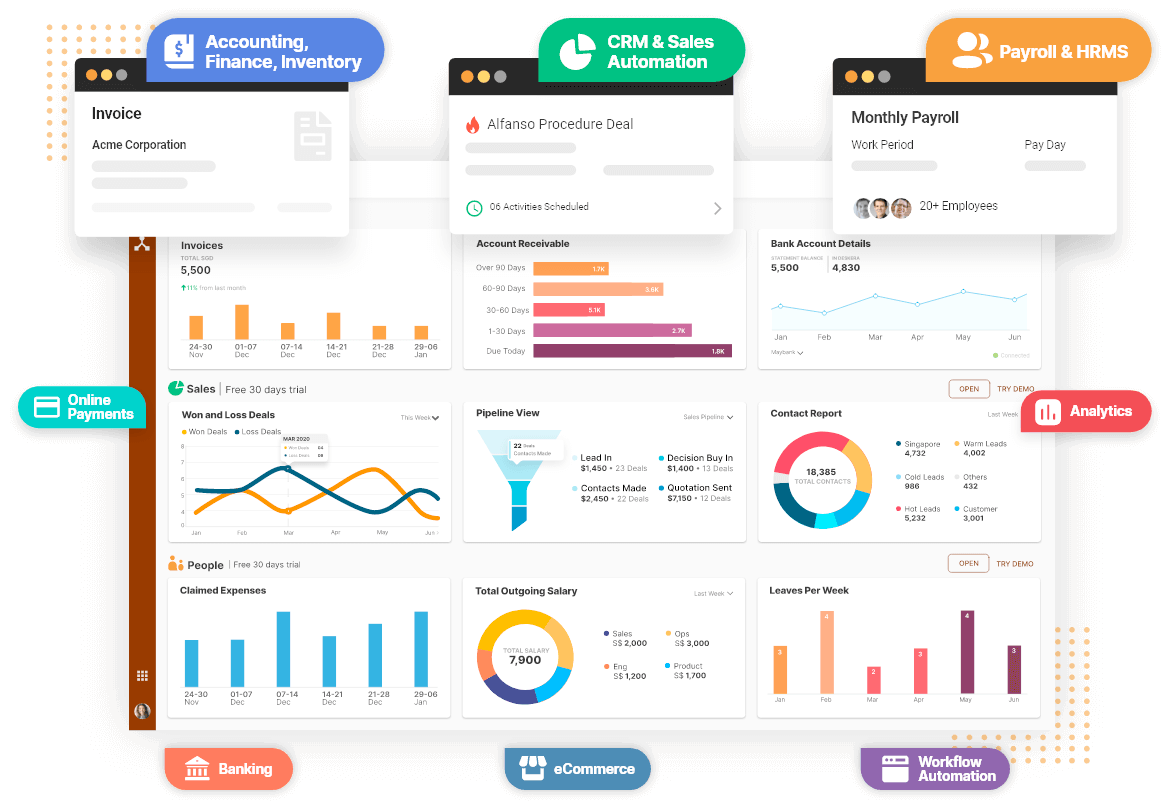
Integration with E-commerce Portal
E-commerce shop owners can integrate their website with Deskera Books, allowing them to get real-time visibility of the number of orders they receive daily.
Our 2-way integration keeps the stock availability updated on the e-commerce website.
You can sync orders received on your e-commerce website directly into Deskera Books and generate invoices instantly. The payments also get reflected immediately, which helps keep your financial statements updated at all times.
Automate Inventory Tracking Across Warehouses
Deskera understands whether you have a single warehouse or multiple warehouses across locations- Tracking inventory is the biggest challenge a distribution business faces.

You can track stock and inventory along with the warehouse location with Deskera Books. You can define product attributes like color, size, brand, etc as per your segment's need. Track reorder levels, serials & batches for your SKUs.
You can also add product images and barcodes to quickly scan the products in transactions and generate invoices & orders.
Maintain multiple warehouses and get instant reports on stock levels in each of the warehouses.
Real-Time Stock Visibility
E-commerce shop owners have a tough task updating stock or inventory availability on their website regularly as orders keep getting routinely fulfilled.
Deskera Books allows you to integrate your inventory on a real-time basis with your e-Commerce website, ensuring all stocks are updated instantly.
Manage and Reconcile Order Returns
As an e-commerce business, you often need to manage the return requests coming from your customers.
It becomes a challenging task to track and reconcile financial transactions associated with the returns cycle with multiple customers and orders.
E-commerce sellers can integrate the returns process with Deskera Books, thereby keeping the accounts up to date. You can track Invoices against which stock was returned using our sales return report and also track if the replaced goods were dispatched timely or not.

The inventory updates itself whenever you create a return transaction.
Stock Creation & Integration
You can import all your product masters from an excel file using our bulk import tool. Our integration capabilities ensure your e-commerce website is also able to list these products instantly.
Any changes made in existing products reflect on your website, which reduces redundancies and manual errors.
Easy Online Accounting
You focus on orders, invoices, receipts, payments and selling your products online while Deskera takes care of all the accounting needed for compliance and reporting.
We do the heavy lifting behind the scenes so you can focus on running your business.
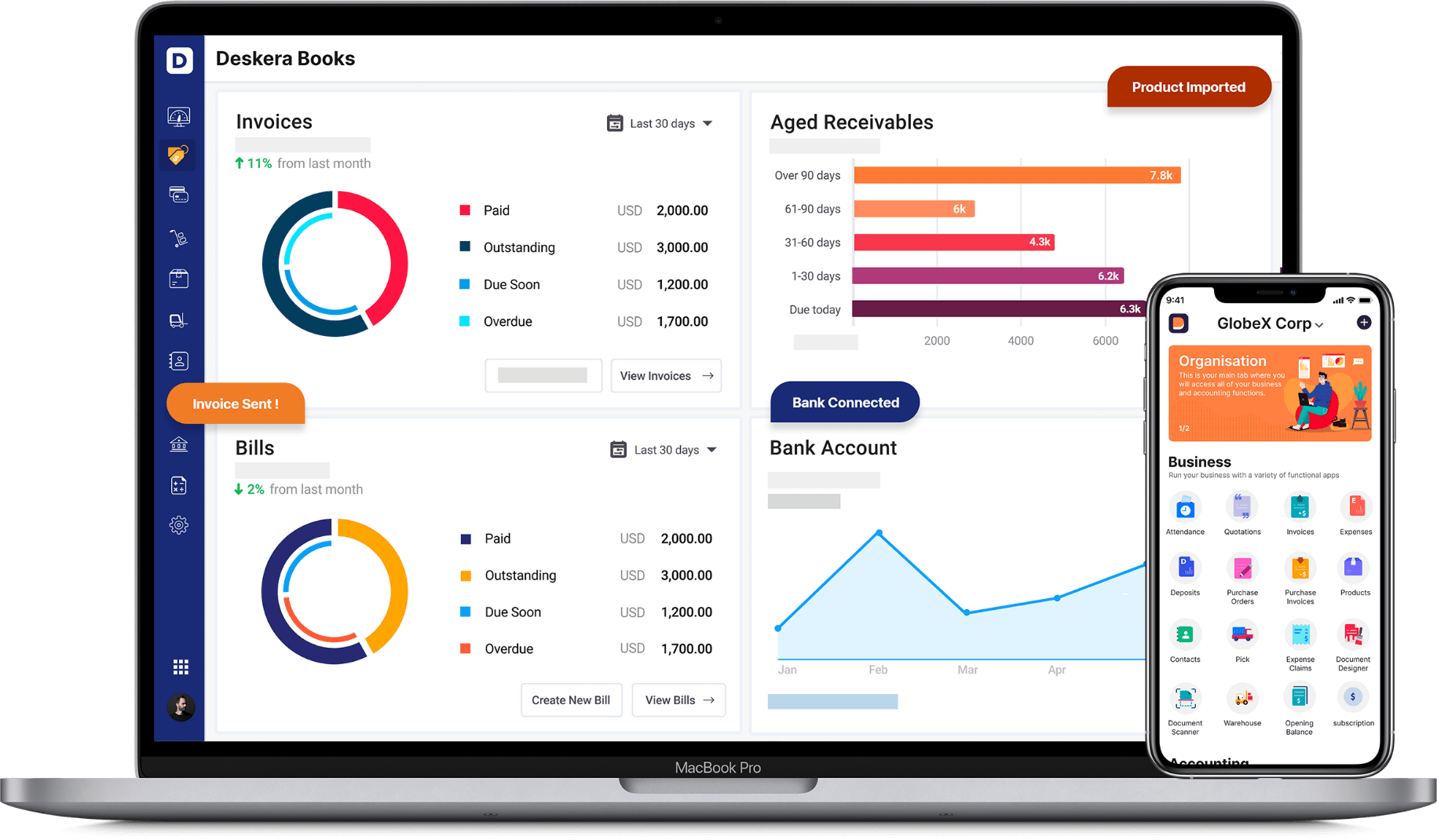
Key Takeaways
Warehouse vs Dropshipping which order fulfillment to choose is always confusing, but based on the pros and cons and your current business standing it’s you who can take a call. Ofcourse, as your business grows you can transition to owning your stock as we have mentioned in the article.
Hope this article can help you make a better decision.
Here are the key points discussed in this article
- Dropshipping is an order fulfillment method in which businesses don't purchase and keep their stock physically with themselves.
- In dropshipping the online store is dependent on a third party for the quality of the product, its packaging, and timely delivery.
- Order fulfillment through warehouse inventory is another great alternative for online businesses. It is the traditional way of fulfilling your orders.
- Order fulfillment through warehouse inventory can ideally be done in two ways i.e., Self-fulfillment & 3rd-party (3PL) fulfillment method
- As your business grows, it is critical that you move to a more traditional e-commerce model
Related Links

